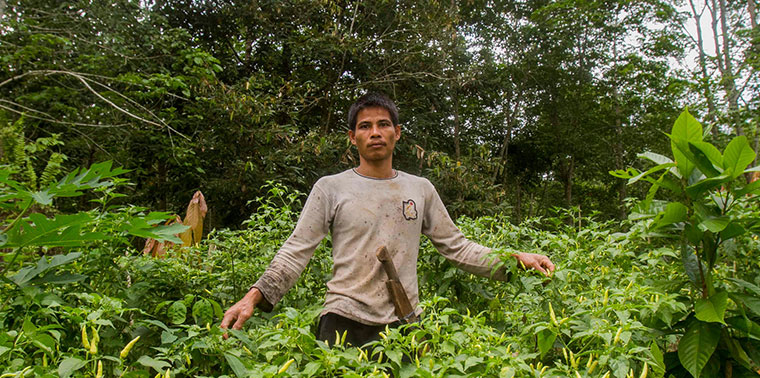September 19, 2016 — Agroforestry — integrating trees into cropland or pastureland — is often discussed as a promising strategy for helping to ease the threat of climate change because trees are particularly good at sucking carbon dioxide from the air and socking it away for the long term. However, most global and regional calculations of carbon capture and storage, including those of the Intergovernmental Panel on Climate Change, ignore farm forests. That could change, thanks to a new study published in Scientific Reports that takes a look at trees on agricultural land and quantifies the powerful role they play in sequestering carbon.
Using estimates of global farmland tree cover derived from remote sensing observations, a team of researchers from Asia, Africa and Europe calculated the amount of carbon captured and stored by trees growing on farmland. When carbon stored by these trees was included, total carbon storage for agricultural land measured more than four times higher than current IPCC default values. “These results show that existing tree cover — thus far ignored in most global and regional calculations — makes a major contribution to the carbon pool on agricultural lands,” the researchers wrote.
The study found that as the world’s forest resources decline, tree cover on agricultural land is expanding. Analysis of the remote sensing results revealed that 43 percent of the world’s agricultural land was forested in 2010, a 2 percent increase over the previous 10 years. Looking at regional patterns in the distribution of agricultural tree cover, the researchers found high percentages of tree cover occurring in humid regions such as Southeast Asia, Central America, eastern South America and central and coastal Africa. Tree cover was moderate in the majority of agricultural areas in South Asia, sub-humid Africa, Central and Western Europe, Amazonian South America and Midwestern North America. Agricultural areas with low tree cover included Southwest Australia, Eastern China, the northern prairies of North America, and the southern border of the Sahara.
Heavily populated areas tended to have less tree cover, despite their climate, so regional variations and trends were also investigated. This analysis revealed many areas where higher tree cover density and carbon storage are possible. Encouraging agroforestry in these regions through policy and incentives, the researchers noted, could be an “achievable and relatively fast” path to increasing greenhouse gas absorption.
The researchers also examined the amount of carbon stored on agricultural land in individual countries and found insightful differences. Places where forests are regarded as nationally important, for example Brazil or Indonesia, have high and increasing carbon storage levels on agricultural land. In Brazil, some of the increase may stem from policy initiatives and the adoption of agroforestry practices. Argentina, on the other hand, has experienced substantial loss of carbon capture and storage, most likely due to widespread adoption of large scale mechanized soy cultivation over the past decade. The report notes that more research is necessary to understand what is driving these trends so effective policies and market incentives can be developed to both reduce forest conversion and encourage more trees on farmland.
In addition to being an efficient strategy to offset carbon losses due to deforestation, the researchers noted that integrating trees into the agricultural landscape also benefits small farmers around the globe by helping to optimize soil moisture, boosting soil nitrogen, and in general encouraging a more diverse, productive, profitable, healthy and sustainable use of land.
“In summary,” they conclude, “our analyses highlight that agroforestry, and tree cover on agricultural land in general, has clear potential to contribute to climate change mitigation while providing an array of adaptation benefits.” ![]()
UPDATED 09.22.16: The journal citation was corrected to Scientific Reports.
Ensia shares solutions-focused stories free of charge through our online magazine and partner media. That means audiences around the world have ready access to stories that can — and do — help them shape a better future. If you value our work, please show your support today.
Yes, I'll support Ensia!
